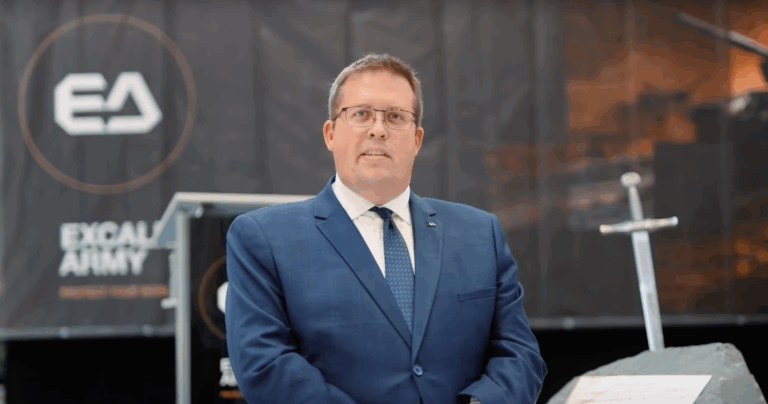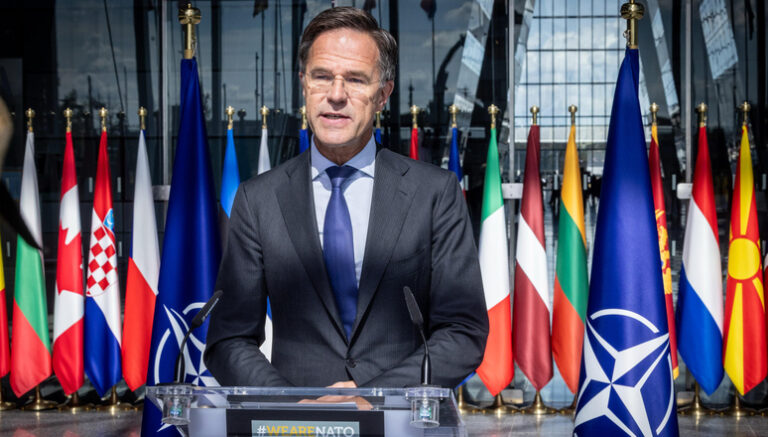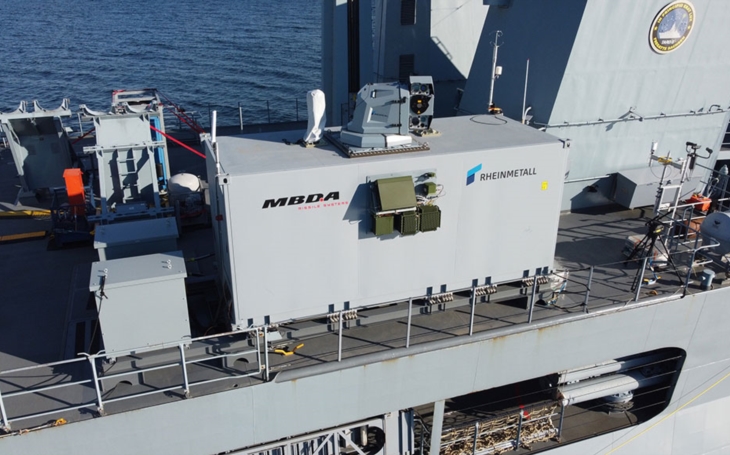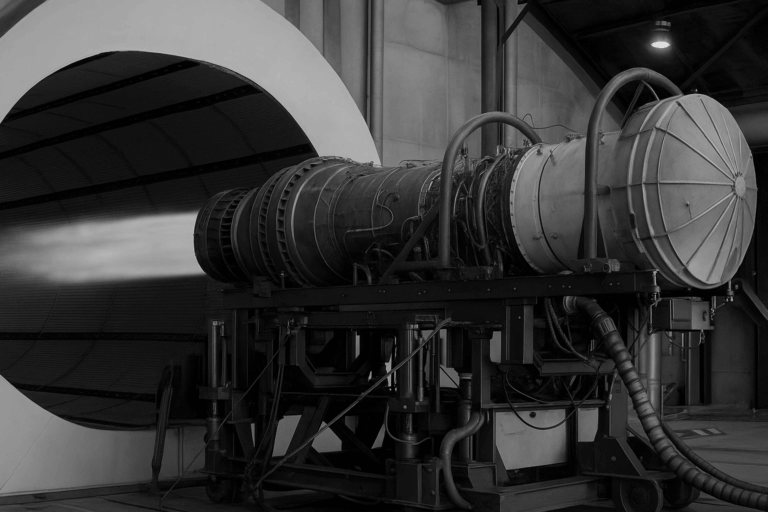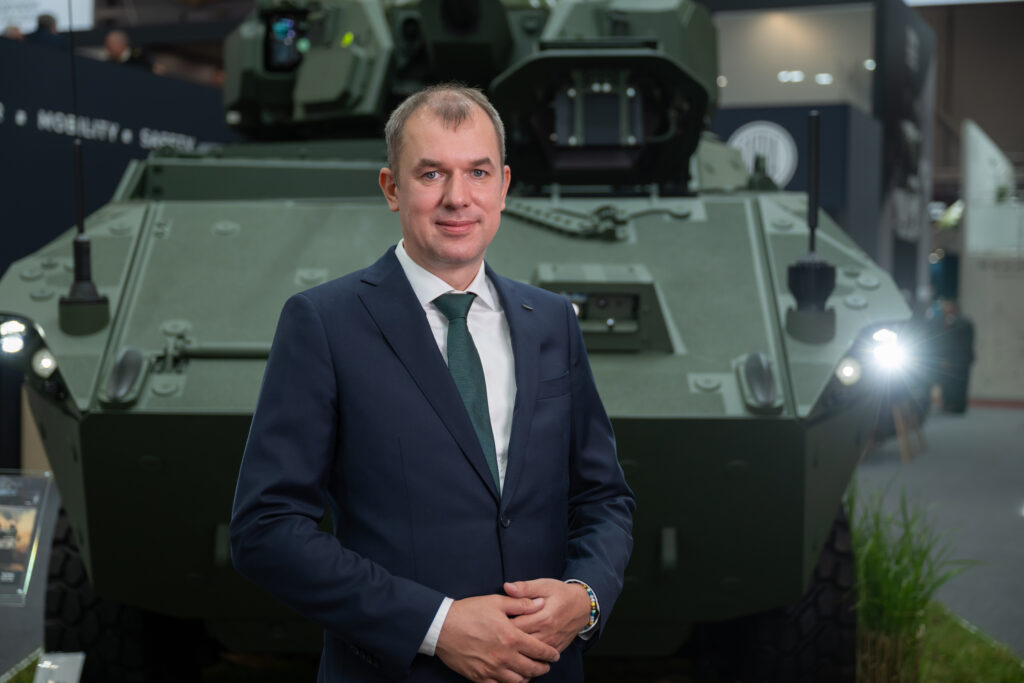
Tomáš Mohapl
A New Generation for the Digital Battlefield
An interview with Tomáš Mohapl, CEO of Tatra Defence (TD), reveals a leader for whom defence is not just a profession but a lifelong passion. His interest in military technology began in childhood when he built model aircraft, and today he leads a company that develops and produces advanced wheeled armoured vehicles. “What began as a hobby has become my profession,” he remarks. The war in Ukraine reshaped his outlook: the defence industry is not an abstract sector but the practical means of protecting nations. “Threats are invisible until they materialise. And when they do, it is too late,” he says. For him, TD’s mission is clear: to strengthen the defence capabilities of the Czech Army and allied forces in an uncertain world.
What was the strategic objective behind developing the new generation Pandur 8×8 EVO?
We saw that the Pandur II 8×8 platform had reached its limits, while today’s battlefield, especially with the experience from Ukraine, demands far more. We wanted to preserve proven elements for lifecycle continuity while significantly expanding the integration of advanced systems. Together with GDELS, we launched the development of a new generation, with TD responsible for the 8×8 variant under licence. We redesigned the chassis and architecture to accommodate cutting-edge weaponry, electronics and both passive and active protection, while ensuring modularity to support a wide spectrum of missions.
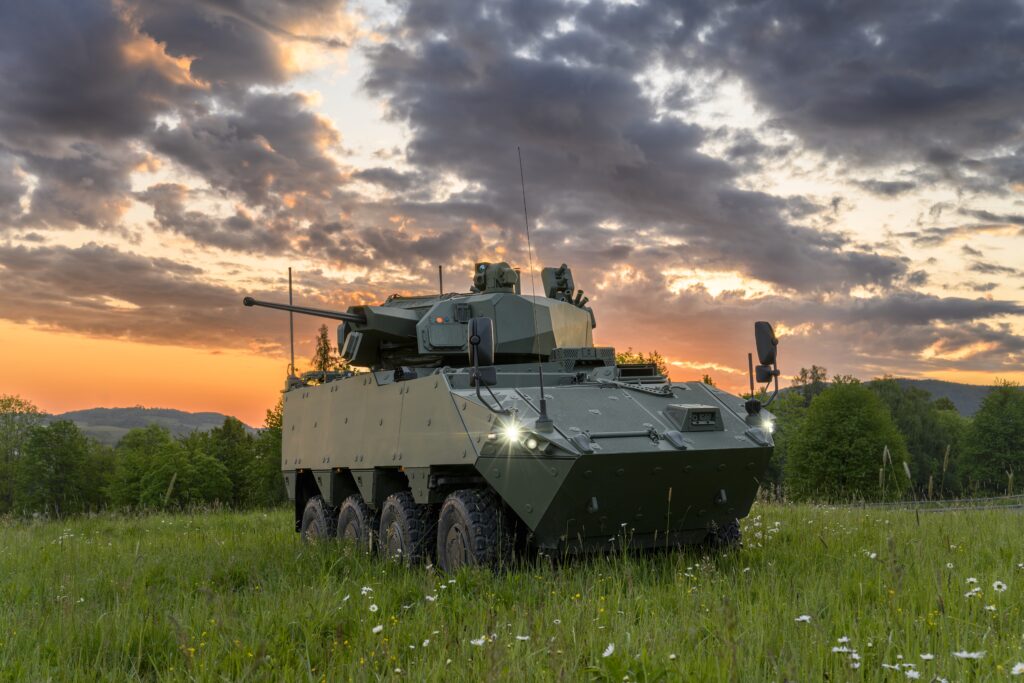
Where do you see the greatest benefit of this vehicle for modern armies, whether Czech or allied?
In crew protection, adaptability and its open digital architecture. The newly engineered hull bottom greatly improves mine resistance, the unmanned turret enhances safety and internal space, and the networked backbone prepares Pandur 8×8 EVO for data sharing across units and C2 systems. The focus is on rapid integration of new technologies, reducing crew workload and ensuring resilience against modern threats.
You mentioned that EVO’s development was influenced by lessons from the war in Ukraine. Could you specify how these experiences shaped the vehicle?
The conflict showed that what worked in 2022 is no longer sufficient. The widespread use of small UAVs and FPV drones is now the greatest threat to armoured vehicles. We therefore went beyond passive protection, adding active protection and further countermeasures, from programmable ammunition in the cannon to hard-kill systems on the turret. The result is layered protection across multiple ranges, effective not only against ATGMs but also against swarms of low-cost drones.

What role does counter-drone protection play in the current doctrine of armoured vehicle development?
It is crucial. Passive armour alone no longer suffices. Detection, classification and automated response are required. This means sensor suites, AI-based evaluation and hard-kill effectors capable of neutralising threats in seconds. On the EVO this is achieved with sensor integration and the Iron Fist active protection system, providing 360 degree coverage and very short reaction times.
The Pandur 8×8 EVO is equipped with an AI-driven situational awareness system. How does it work, and what is its benefit in combat?
SAAV (Situational Awareness for Armoured Vehicles) by Retia integrates EdgeSA by Axon Vision. It employs machine vision and real-time multi-sensor fusion, automatically detecting threats and alerting the crew even when they are engaged in other tasks such as communications or navigation. Data is displayed on screens and in helmet-mounted displays, enabling fully closed operations with maximum situational awareness while reducing crew cognitive load.
You cooperate with Israel’s Elbit. How does technology transfer and integration of their systems work?
For the prototype we chose the UT30MK2 unmanned turret. It is not simply a matter of assembly, we broke the system into subsystems with the goal of localising key parts in the Czech Republic and ensuring long-term production and lifecycle support, including exports. The turret features fully stabilised commander and gunner sights with hunter-killer capability, integration of Spike LR/LR2 ATGMs, and preparation for Iron Fist active protection, including LWS/Elaws. This meets ACR requirements while also addressing global market needs and industrial participation.
You said that at least 67 percent of the vehicle’s value comes from Czech components. Which key systems are already produced domestically?
We do not localise the engine, but armour structures, electronics, hydraulics, specialised military wiring, integration of communication systems, NBC filtration and many other subsystems are produced in the Czech Republic. This is not mere screwdriver assembly, we work deep into modules and subsystems, relying on an established network of Czech partners. We also integrate customer-specific national systems, as we did previously for Indonesia with fire suppression and radios.
With larger contracts you plan further localisation in the Czech Republic. What technologies and partners are involved?
Primarily electronic subsystems, where transfer makes sense only at higher volumes. We leverage synergies across the group and cooperate with foreign OEMs who welcome alternative production sources. Our priority is sustainability, building domestic production, service and lifecycle support in a way that is not dependent on a single programme.

You argue the Pandur 8×8 EVO has high export potential. Which markets are you focusing on?
We are targeting markets seeking an 8×8 with high protection, open architecture and genuine local participation. These include Europe, select Asian countries and the Middle East. For exports, the reference of the ACR is important, as is the ability to integrate national systems.
What makes your offer distinctive compared to established competitors?
The combination of modularity, active protection, AI-enabled situational awareness and real localisation. The UT30MK2 with Mk44/Mk44S cannon, Spike LR/LR2, Iron Fist readiness, programmable ammunition and a digital backbone on a chassis designed for greater weight and survivability than the Pandur II 8×8 is a package built for both current and future threats.
What role does TD play within the CSG group? And how important is the Pandur 8×8 EVO for its overall strategy?
Within CSG’s defence segment we are responsible for wheeled armoured vehicles and military Tatra applications. From the start, TD was conceived as a development company integrating group systems into complete platforms. We have progressed from licensed programmes such as Pandur 8×8 and Titus to our own products and technology transfers in Poland, Ukraine and the UAE. The Pandur 8×8 EVO is a strategic project that combines development, domestic production and export ambitions while continuing the proven ACR fleet.
How important is cooperation with the Czech Army in developing and fine-tuning new solutions?
The ACR is our core partner. It is modern and demanding, which drives us forward. While the Czech market alone is too small, the ACR provides a vital reference. For the Army, having production and support at home is an advantage that has proven essential in times of crisis.

Do you plan further variants or extensions of the Pandur 8×8 EVO modular family, for example reconnaissance, command or medical?
Yes. We have IFV (KBVP) prototype now, but the portfolio will be broader: command, reconnaissance with advanced sensors and IT, engineer, a turret-mounted self-propelled mortar already shown at IDET, short-range air defence, medevac and even hardened firefighting versions for munitions depots. We can also modernise existing fleets with state-of-the-art weapons and sensors.
Which technological trends such as AI, hybrid drive or network integration do you see as key for the next generation of armoured vehicles?
AI for crew assistance, automated detection, target prioritisation and real-time information sharing. Open digital architectures and integration with sensors, including UAVs, so crews operating closed can still maintain the fullest possible picture. Power and energy management for increasingly demanding electronics will also be crucial. We do not discuss ongoing R&D publicly, but our path is clear: towards a highly sophisticated networked combat system on wheels.

Conclusion
The Pandur 8×8 EVO represents far more than an upgraded vehicle. It embodies Tatra Defence’s ambition to anticipate the realities of today’s battlefield while preserving the reliability of a proven platform. Under Tomáš Mohapl’s leadership, TD combines Czech engineering capacity with international partnerships to deliver a vehicle that is modular, digitally connected and designed to counter threats from drones to anti-tank missiles. For the Czech Army, it offers a domestically supported system with export potential. For TD, it is both a technological milestone and a statement of intent: to remain a key European player in the defence industry and a trusted partner for allied armed forces.
Pandur 8×8 EVO – Key Specifications
| Area | Specification |
| Powerpack | Cummins ISL 540, 8.9 l, 405 kW @ 2200 rpm, 1900 Nm @ 1400 rpm; automatic 6-speed ZF Ecomat 6 HO 902 S. |
| Speed & Range | Top speed 105–110 km/h (depending on configuration); range ≥ 600 km. |
| Weight | Up to 25 t (improved ballistic and mine protection; redesigned hull bottom). |
| Protection | Combined passive + active protection (Iron Fist hard-kill; 360° coverage; very short reaction time). |
| Turret / Armament | UT30MK2 (Elbit): 30 mm Mk44/Mk44S cannon (−15° to +60°, fully stabilized), coaxial 7.62 mm MG, 2× Spike LR/LR2 ATGMs; hunter-killer; LWS/Elaws; 8× 76 mm smoke launchers. |
| Situational Awareness (AI) | SAAV (Retia) with EdgeSA (Axon Vision): real-time multi-sensor fusion, automated threat detection; outputs also to helmet-mounted displays; reduces crew workload. |
| Modularity / Variants | KBVP (demo), command, reconnaissance, communication, engineer, turret-mounted mortar, SHORAD, medevac, hardened firefighting configs; modernization of existing fleets. |
| Localization | Genuine localization of key modules and subsystems in the Czech Republic (UT30MK2 integration with Elbit; SAAV integration, etc.). |
| Premiere | Prototype EVO – world premiere at IDET 2025 (Brno). |
By: Katerina Urbanova
Photo credit: Jakub Viktora



